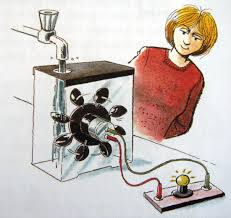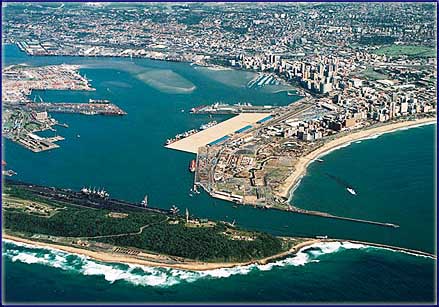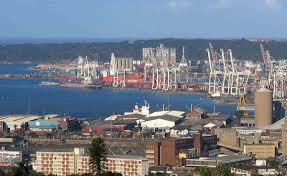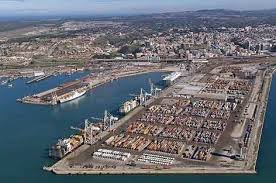Public Tenders vs Private Tenders
The difference between public tenders and private tenders is that public tenders are advertised in the public domain and are open to the public, and private tenders aren’t.
Can I go home now?
No.
Right….
The first problem is the terminology. Public vs open, private vs closed etc. I tend to favour “Public” and “Invited” when describing the difference between these two types of tenders. “Private” can be misconstrued. When someone asks me after a “private” tender, my first question is; are they looking for tenders from Private entities (which could be public or invited) or do they mean “invited” tenders? Private entities make use of publicly advertised tenders as well. Not a lot to be perfectly honest, but it is a way for them to freshen up their supply chain. So for the sake of clarity, I’m going to stick to “Public” and “Invited”.
Public tenders are predominately Government. That is literally the entire point of Government Procurement. The Government is spending the “People’s money”, so it better be out in the public domain where everyone and their uncle can have their say. [tweetthis]The five pillars are: Value for Money, Open and Effective Competition, Ethics and Fair Dealing, Accountability and Reporting, and Equity.[/tweetthis] “Open and Effective Competition” is represented by the public aspect of advertising your tender notices. These tender notices are advertised in newspapers (not for very much longer, apparently), eTenders, Government Tender Bulletin, Provincial Tender Bulletins, Government websites, Provincial websites, Municipal websites and Notice Boards. The information is out there to be found. If you can find it, then you can participate. Anyone can rock up to a site meeting or a tender closing; no one can stop you. However, the award is very much dependent on how you fulfill the specific criteria required. Anyone can play the game, but only the professional and serious have an actual shot at winning. Plus, generally fly-by-nights and chancers are not appreciated or tolerated. So don’t be one of these. Just don’t.
Public tender notices can be advertised by private entities/ companies as well. It isn’t very common, like I said; but it does happen. Most private entities have their own Supply Chain Management Department and processes. This department handles the supply chain process for that company. Does the company need a cleaning company or a new security company? Does the furniture need replacing? Are they considering building a new headquarters? These are the same types of questions that Government has to deal with, but it’s not out there for all to see. The private entities will usually utilise their tried and tested methods that they’ve been using for years. This rarely involves advertising to the public. The most common tool I’ve come across, is the Supply Chain Database. Private companies would have their own database that they maintain. They approach those companies listed, as they would already have a history with that company so there’s a certain sense of trust and expectation of product or service. Private entities, just like Government, do not want to be wasting their time and money on chancers. How do you get listed on a private entity’s database? Ask! Do you have a Supplier Database? Yes, awesome. Who do I send my company details to? What’s the procedure? You will never learn, if you don’t ask.
Unlike public tenders, invited tenders are generally only heard about after the fact. You tend to hear about them from your mates’ brother’s sister-in-law who overhead it at a bar brawl. Like bread crumbs scattered in the wind, and you have to chase them back to the source. Invited tenders are held very close to the chest. This, unfortunately, gives them a bit of a shady reputation. Not necessarily the case, since companies nowadays have time considerations and budgets that don’t really allow for un-invited delays and inclusions. The sad fact is, if you weren’t invited; then be prepared to be bounced from the party.
Government utilises invited tenders as well. Which is a neverending source for debate and scandalous speculation. When it’s all on the up and up, simply time and money are against going out to public tender. For example: an Emergency. When an actual emergency occurs, say a natural disaster, nobody is going to tolerate the Government or a Municipality going out to public tender. Why? It takes too long. So tenders are invited. Where would the contractors be sourced from, you ask? The applicable Supplier Database. Verbal quotes, or more likely written quotes are called for. In emergencies, the aim is to fix the problem as quickly and efficiently as possible to prevent further issues. Bear in mind, that all decisions related to this situation would have to be recorded. All decisions concerning Supply Chain Management, have to be recorded. Otherwise, a certain word starts surfacing “misappropriation”.
It’s also interesting to note, that “lack of planning” does not constitute an emergency. If suddenly a pen cannot be found in your Municipality for love nor money, then this is not an emergency but terrible terrible planning. It’s pencils for you, until the tender can be awarded.
Invited tenders can be the chosen form of procurement when specialty works or products are required. Supply Chain Departments are supposed to have an idea of who can do what for them. It they know that there’s stacks of suppliers of a certain product, then it’ll be open competitive bidding for them. But if they know there’s only two companies that can supply a certain product, it’s not viable to go out to public tender. Both companies are invited to tender, and one is awarded. There’s cases where there’s only one supplier/ contractor. That guy gets asked to price. It’s too costly and too time consuming to go out to public tender, when you already know who your suppliers could be. This actually implies that there’s a bit of common sense being utlilised in the Government. Someone actually hoped to save money and time, by not relying on mindless bureaucracy. Treasury Regulation 16A6.4 comes into play, but it has to be recorded and reported. Everything has to be recorded and reported.
Invited tenders can also be the result of other supply chain processes: Panels, Pre-Qualifications and Expression of Interests (EOI). These are the most common. Think of it as a gathering of potential suppliers/ contractors. They are assessed and then invited to tender. Generally, the pre-qualification/ EOI are out in the public domain. But the invited tenders will be behind the scenes. I tend to see these for long term projects, where a certain aim is hoping to be achieved. The idea being that if the Government wants to refurbish an entire Province’s schools (for example), then going out to tender for each individual school is just nuts. Get a group of potential pre-qualified contractors together in one go, and then divvy the jobs out as budgets and time allows.
When hoping to do business, hedge your bets.
If you want to work with a private company, talk to them. If you want to continue working with the Government, talk to them as well. Whether it’s public tender notices or invited, information is key.
http://www.treasury.gov.za/legislation/pfma/supplychain/General%20Procurement%20Guidelines.pdf
http://www.treasury.gov.za/divisions/ocpo/sc/Guidelines/SCM%20Jan900-Guidelines.pdf
About Claire Donaldson
I started working at Leads 2 Business in February 2005, and have served as Head of Department of Daily Tenders from 2007 until the present. I oversee both the Daily Tenders South Africa and Africa Departments.
- Web |
- More Posts(66)



















